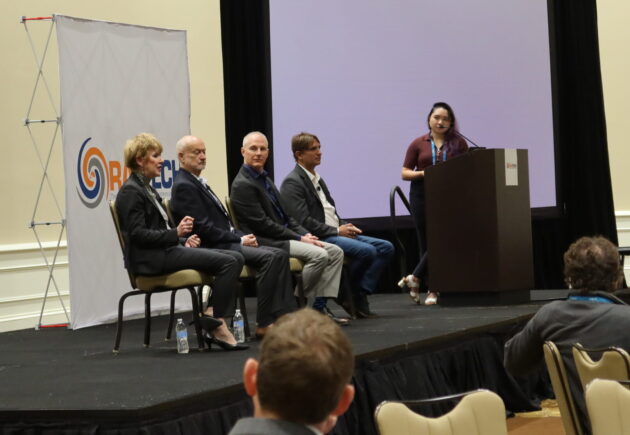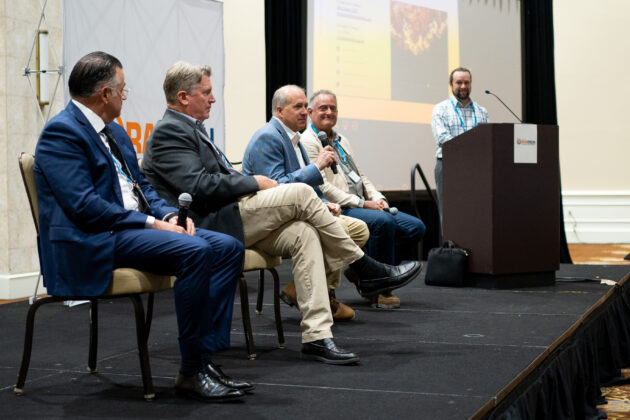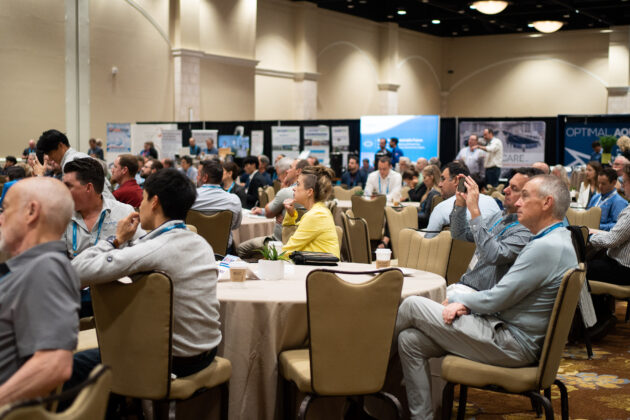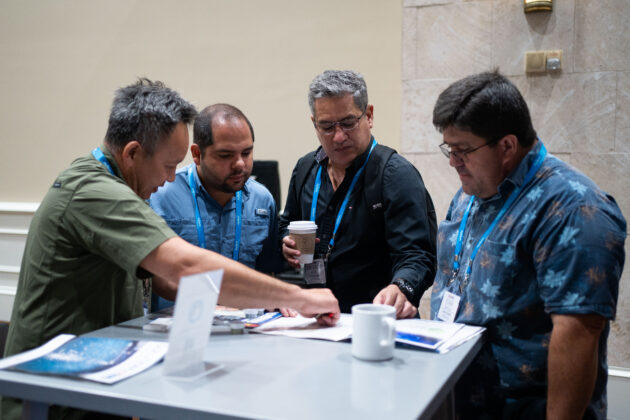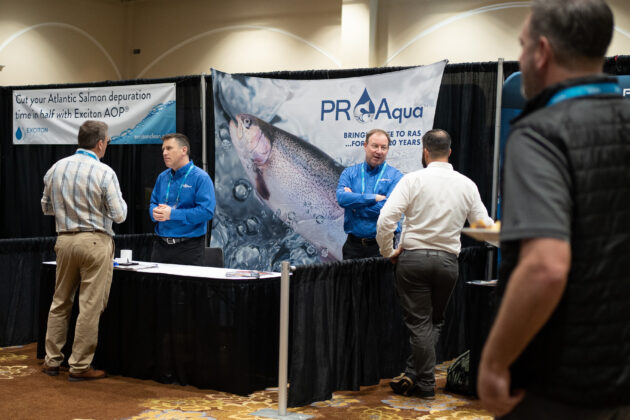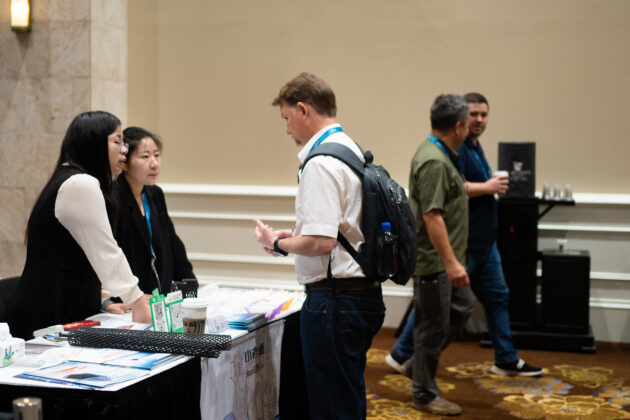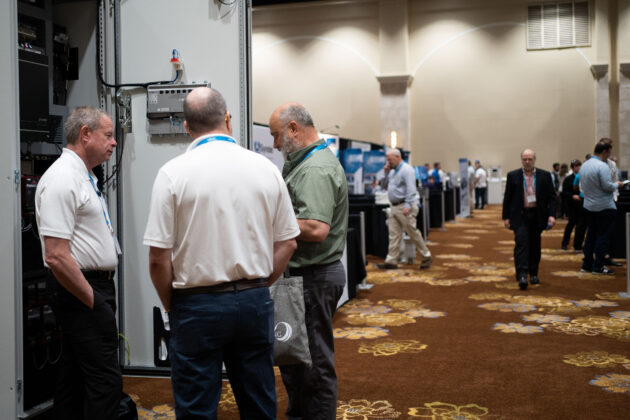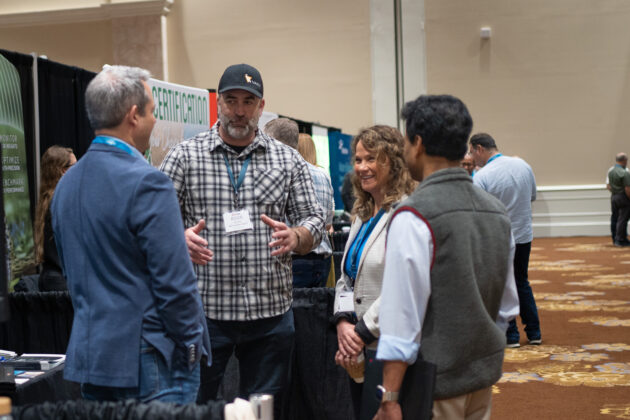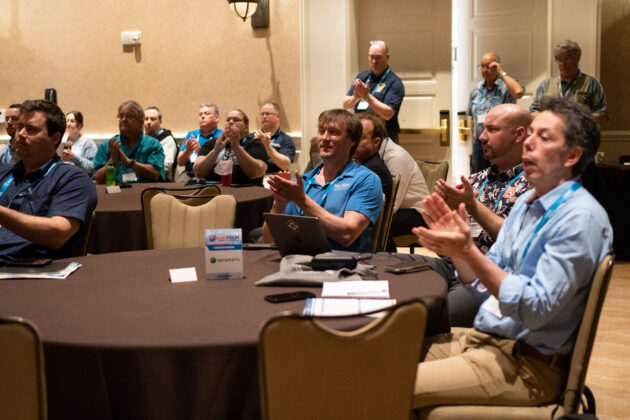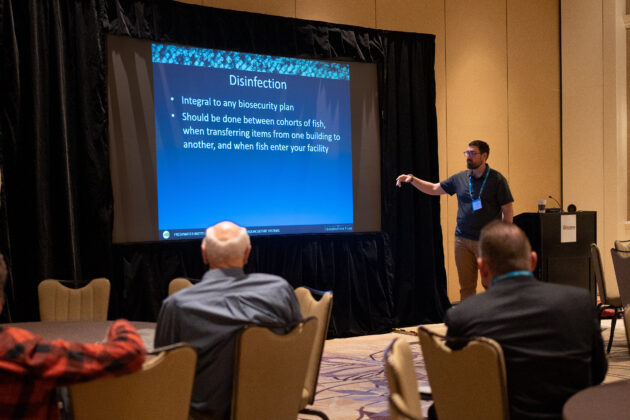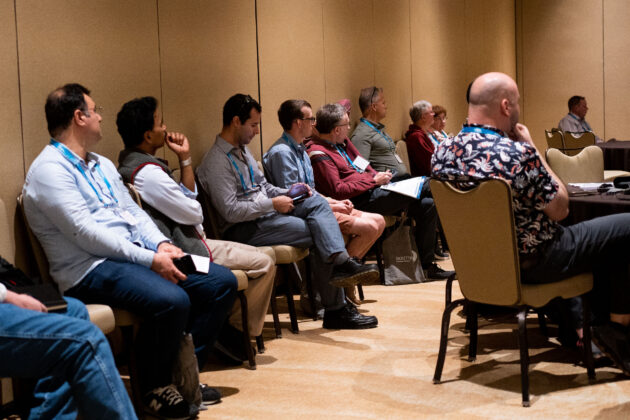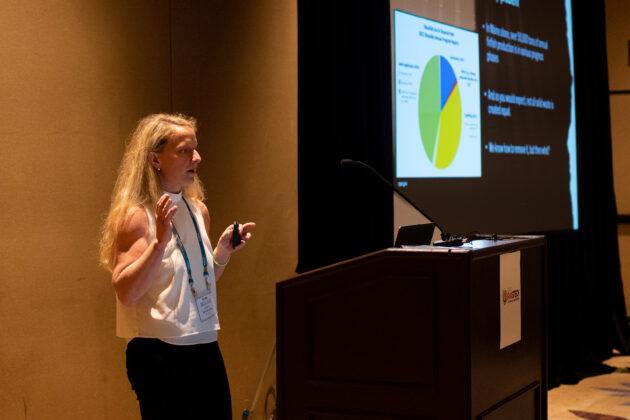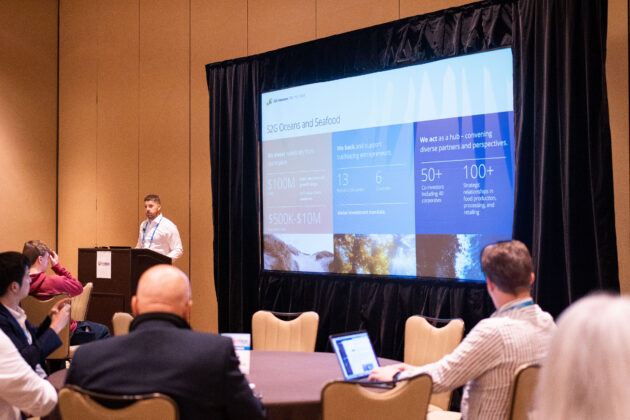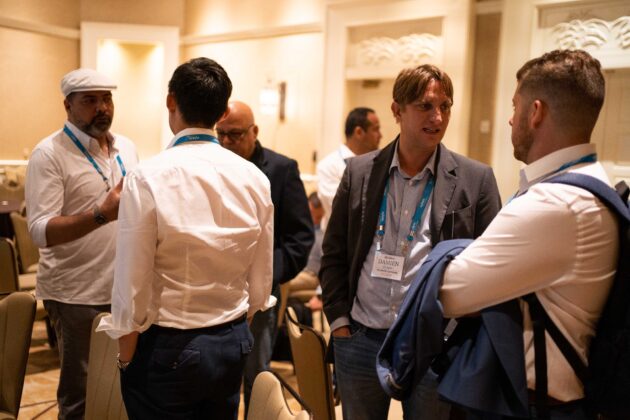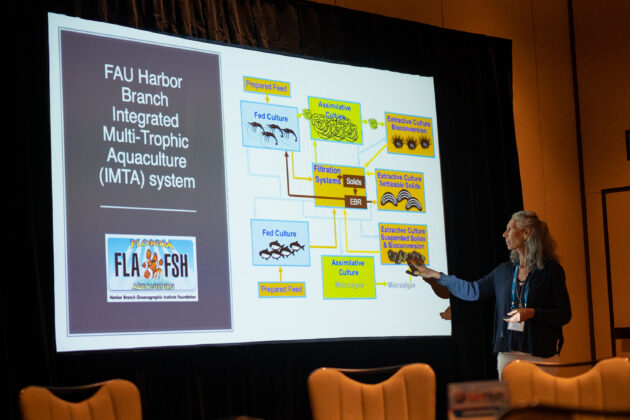
Features
Systems
Technology
RASTECH23 cashing in on collaboration
April 24, 2023 By Nestor Arellano
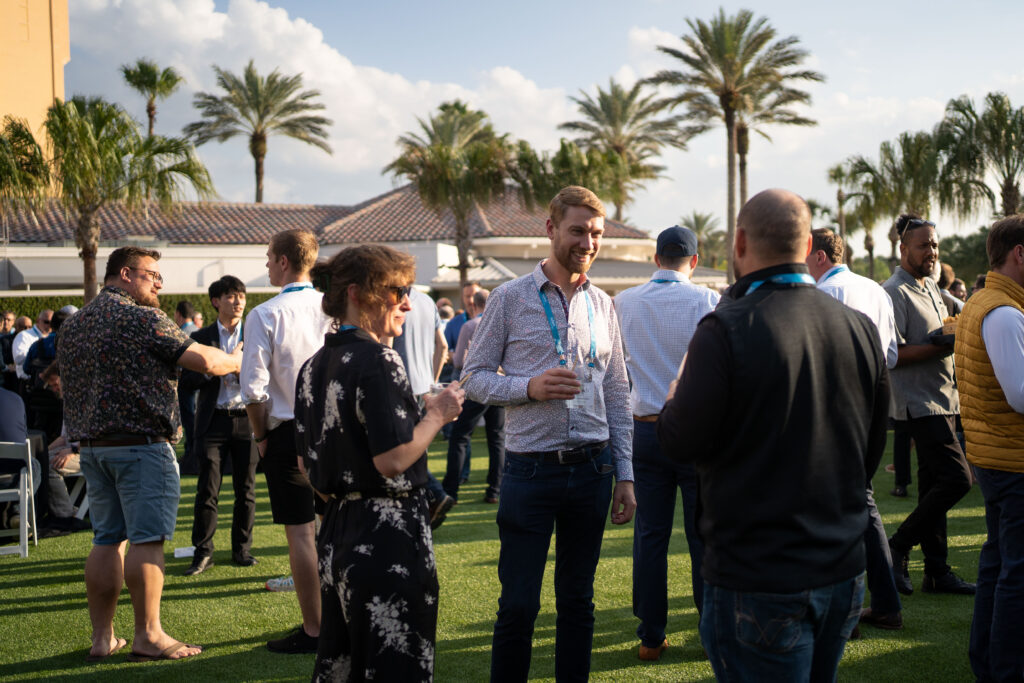 RASTECH 2023 (April 20-22) gathered more than 400 industry professionals from 16 countries to Orlando, Fla., USA. (Photo: Jean Ko Din, RAStech Magazine)
RASTECH 2023 (April 20-22) gathered more than 400 industry professionals from 16 countries to Orlando, Fla., USA. (Photo: Jean Ko Din, RAStech Magazine) Collaboration and the ability to pivot rapidly are key survival tools in today’s ever changing aquaculture landscape. This was a point frequently stressed by industry experts who spoke at the recently concluded RASTECH 2023 Conference and Trade Fair in Orlando, Fla.
The two-day, sold-out event was held at the J.W. Marriott Orlando Grand Lakes. It was attended by more than 400 people from 16 countries who shared their experiences and knowledge in aquaculture and the recirculating aquaculture system (RAS) industry. Investors, board directors, farm managers, researchers, engineers and technical suppliers were among the crowds discussing how to move the industry forward.
During the first keynote session titled, “Lessons Learned,” speakers discussed their strategies for dealing with crucial challenges their businesses faced. Among the panelists were Damien Claire, chief sales and marketing officer at Atlantic Sapphire; Justin Henry, owner of Henry Aquaculture Consult and aquaculture business director at University of British Columbia; Per Heggelund, founder of AquaSeed, Sweet Spring Salmon and now, Andfjord Salmon; and Sylvia Wulf, president and chief executive of AquaBounty Technologies.
Establishing partnerships
They agreed that from dealing with supply chain challenges in a post-Covid business environment to getting a handle on perennial technical issues and production problems, the flexibility to quickly shift tactics and employ strategic alliances can spell the difference between floundering and thriving.
“Really establishing those partnerships, and working with your collaborators is critical,” said Wulf.
In the months following the Covid outbreak, shipping issues disrupted the delivery of electrical equipment and components needed by aquaculture companies. Prices of materials skyrocketed.
In response, AquaBounty conducted weekly and monthly consultations with its contractors and suppliers. “We were in constant collaboration with our partners to make sure we understood what the critical supplies were, when did we need them, and what was going to happen with pricing,” said Wulf.
At one time the cost of copper was shooting up. AquaBounty needed to make decision on whether to buy the material at a high price or wait a bit but run the risk of supply disappearing.
“Sometimes, we need to buy at a higher price than what we had planned for because we will need the product at some point in time. You got to have a plan, but you need to be flexible,” Wulf explained. “We have really been closely working with our engineers and our subcontractors to make sure we consider every efficiency we can find.”
Collaboration also means connecting with academia, research organizations, and industry knowledge centres that can provide your business with vital research information according to Heggelund.
“The Freshwater Institute has been the nucleus for all of us… the University of Maryland has been in the same position,” he noted. “They may not have seen the same growth issues we seen, but they still keep on working on and solving these issues. We are fortunate that we have so many institutions that can support us as we learn and move forward.”
Later on in the conference, while speaking at a Business track session titled, “Creating a RAS Business Model,” Henry drilled down on the areas where a RAS business might need to find collaborators.
“You should ask yourself who should be involved in creating your business RAS model,” said Henry.
By doing this exercise, businesses can develop a list of areas where expertise is needed.
“You will need finance expertise, you will need expertise in regulatory framework for the location you want to operate on, you will need RAS technology expertise, you will need operational expertise, RAS design expertise, sales and marketing expertise,” Henry said.
This could require “several people, several groups of people, or just one person” but it will mean collaborating.
Rapid reaction
Asked for his advice on what companies can do when met with a challenge such as a pandemic, Henry said you can either fall back temporarily or meet the hurdle head on.
“For a lot of the projects in the last one or two years, the answer was maybe a bit of a slowdown. Scaling down was the solutions of some people who were forced into a decision,” he explained. “What we’ve done was to take this opportunity to focus on design. We worked together with PR Aqua to drive cost down through design.”
He said they looked at things such as minimizing the use of high-cost materials and reducing footprint.
Like most aquaculture operations, the Miami RAS arm of the Norwegian company Atlantic Sapphire suffered supply delays and rising materials cost, according to Claire.
“Pre-COVID we had a budget of US$225 million which we had to revise to $270 to $300 million, which is quite significant,” said Claire.
To cut cost, Atlantic Sapphire shifted strategies by changing the design of its RAS tanks.
“In our Phase Two construction, we actually moved the fish from steel tanks to concrete tanks,” he said. “Cost is the main reason for the change.”
Following some “setbacks” with its Phase One Miami facility, Atlantic Sapphire also decided to change RAS partners.
Collaboration powers design
“We are still working on fixing some of those issue a couple of years later,” according to Claire. “Our biggest lesson was we decided to move with a new construction team.”
Instead of an integrated RAS designer, Atlantic Sapphire chose to partner with a local engineering firm that specializes in water treatment.
“What we learned in Miami is that very strong local partnership with water treatment experts is what we need for Phase Two,” according to Claire. “Water treatment is very similar to RAS. Ultimately, we are a very big water treatment plant with fish in it.”
AquoBounty also sought outside help in deciding the design for its three North American facilities.
Wulf said the water filtration system of her company’s Indiana facility was designed by the Freshwater Institute while the technology used at the Prince Edward Island location came from Innovasea.
“We are using the Indiana facility and technology to train, improve and retain out talent pool and the PEI technology we are designing into our Ohio facility,” she said.
Jamie Stein, co-founder of international land-based aquaculture investment firm Devonian Capital, summed up the importance need for collaboration and sharing of knowledge in the RAS industry.
During the “Investor’s Forum,” he said the RAS industry is a fingerling that has just hatched “but it’s not a zero-sum game.”
“Every project we invested in, we worked with talent, experience and hard work from a whole bunch of people,” he said. “We can provide capital but there’s only so much we can do. Collaboration is critical. Every failure hurts us all, and every time we share experience, we grow the pie.”
Print this page
